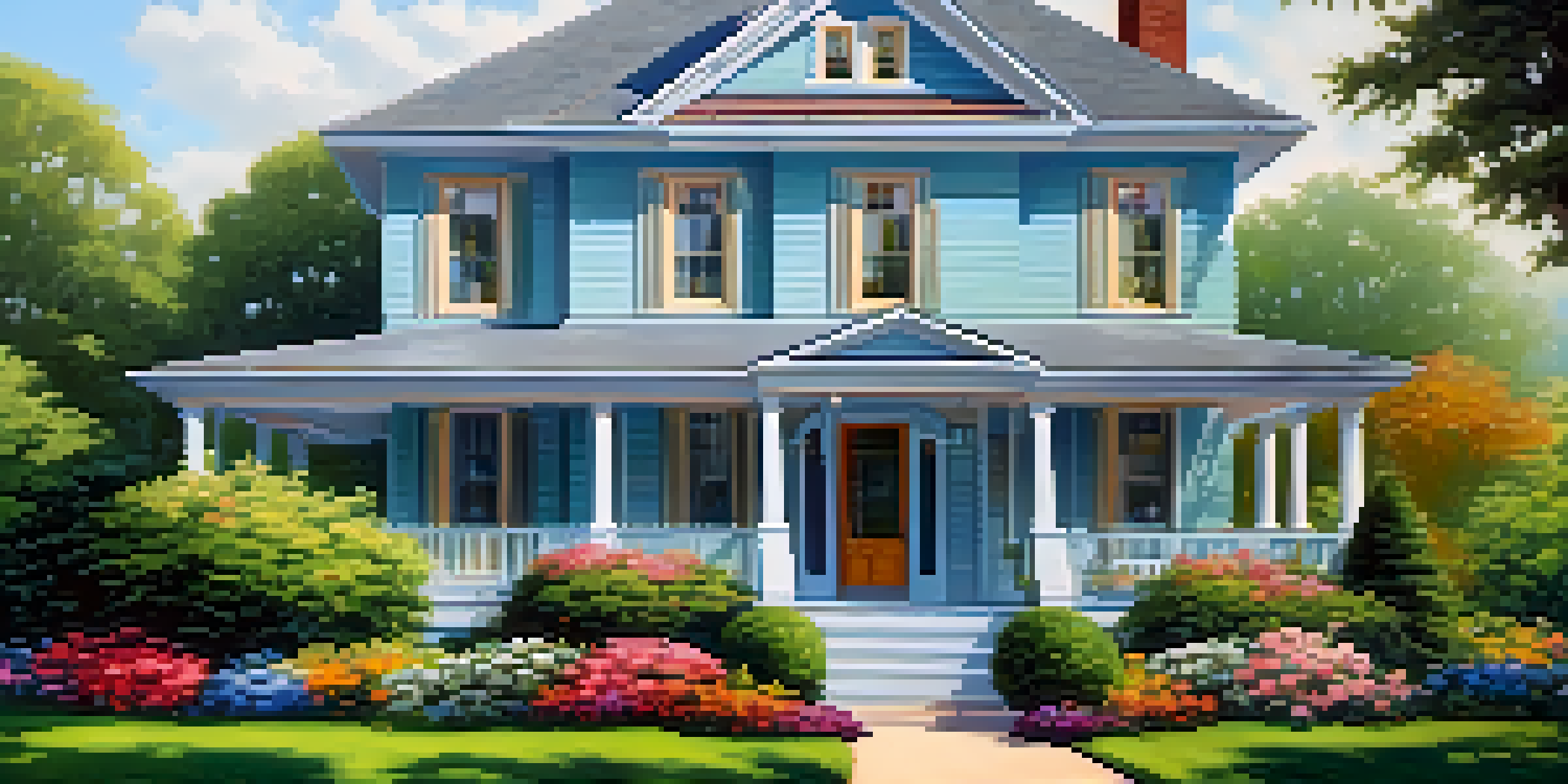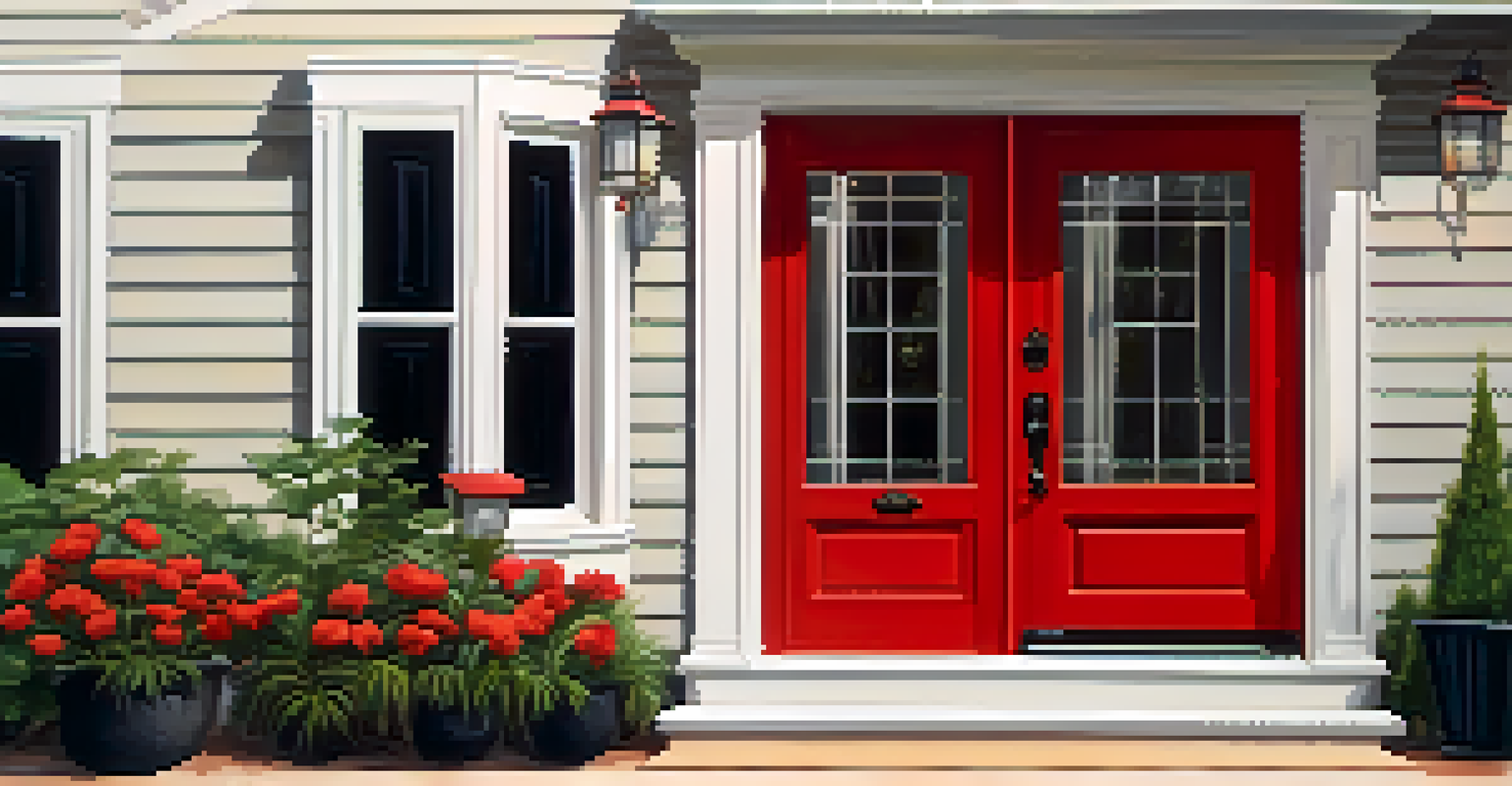How to Use Paint to Refresh Your Home's Exterior

Choosing the Right Paint for Your Exterior
When it comes to refreshing your home's exterior, selecting the right paint is crucial. Exterior paints are formulated to withstand the elements, so look for products labeled as 'exterior' to ensure durability and longevity. Additionally, consider the finish—whether you prefer matte, satin, or gloss—as this will affect the overall look and feel of your home.
Color is the keyboard, the eyes are the harmonies, the soul is the piano with many strings.
It's also wise to think about the color scheme. Lighter colors can make a space look larger and more inviting, while darker shades add depth and drama. Don't shy away from bold colors, but make sure they harmonize with your surroundings and neighborhood aesthetics.
Finally, before you make a purchase, check the manufacturer's recommendations. Some paints work better in specific climates; for instance, you’ll need a different type of paint if you live in a humid area compared to a dry one. Doing your homework here can save you time and money in the long run.
Preparing Your Exterior for Painting
Preparation is key to a successful paint job. Start by cleaning the surfaces you plan to paint; this can involve scrubbing away dirt and mildew with a mixture of water and detergent. If you're dealing with peeling paint, you'll need to scrape or sand those areas to ensure a smooth finish.

Next, inspect for any repairs that need attention. Cracks, holes, or other damages should be filled with appropriate materials, such as caulk or spackle, before you start painting. This will not only provide a polished look but also extend the life of your paint job.
Choose Quality Exterior Paint
Selecting high-quality, climate-appropriate exterior paint ensures durability and enhances your home's appearance.
Lastly, don't forget to protect your plants and outdoor furniture. Use drop cloths and masking tape to shield areas you don't want to paint. Taking these extra steps may seem tedious, but they’ll help you achieve a professional-looking result.
Selecting the Right Tools for the Job
Using the right tools can make all the difference in your painting project. For larger surfaces, a roller can speed up the process, while brushes are excellent for edges and intricate details. If you're painting high areas, consider investing in an extension pole to reach those tricky spots without a ladder.
The details are not the details. They make the design.
Don't overlook the importance of quality tools. Good brushes and rollers will hold more paint and give you a smoother finish, reducing the number of coats you need. It's worth spending a little extra here for a better outcome.
Lastly, have a paint tray, drop cloths, and painter's tape handy. These essentials will make your work easier and help you maintain clean lines, ensuring a neat, professional look for your home’s exterior.
Choosing the Best Time to Paint Exteriors
Timing can greatly impact the success of your exterior painting project. Ideally, you want to paint when the weather is mild—temperatures between 50°F and 85°F are generally best. Avoid painting during extreme heat or cold, as this can affect how the paint adheres and dries.
Additionally, check the forecast for rain or high humidity. These conditions can jeopardize your paint's adhesion and finish, leading to unsightly results. A dry, calm day will allow the paint to cure properly and help you achieve that fresh look.
Prepare Surfaces Thoroughly
Properly cleaning and repairing surfaces before painting is crucial for achieving a smooth and professional finish.
Consider the time of day as well; painting in the morning or late afternoon can help you avoid the harsh midday sun, which can cause the paint to dry too quickly and lead to uneven coverage. Planning your project around these factors will ensure a smoother process.
Applying Paint: Techniques for a Flawless Finish
As you start painting, remember that technique is just as important as preparation. Begin with cutting in—this means painting the edges where the roller can’t reach using a brush. Take your time to create clean lines, which will enhance the overall look of your home’s exterior.
When using a roller, apply the paint in a W or M pattern rather than straight lines. This technique helps to evenly distribute the paint and prevents streaks. Don’t overload your roller, as this can lead to drips and uneven coverage.
Finally, consider applying multiple thin coats instead of one thick coat. This approach not only improves the durability of the finish but also allows for better color depth and vibrancy. Patience pays off when it comes to achieving that stunning, refreshed look.
Post-Painting Care and Maintenance
Once you've completed your exterior painting project, it's essential to care for your work. Allow the paint to cure fully, which can take several days depending on the conditions. During this time, avoid washing the surfaces or exposing them to harsh weather.
Regular maintenance is key to extending the life of your paint job. Inspect your exterior periodically for signs of wear, such as peeling or fading, and address these issues promptly to prevent bigger problems down the road.
Use Effective Painting Techniques
Employing the right techniques, like cutting in and applying multiple thin coats, will result in a flawless and vibrant paint job.
Cleaning your home’s exterior about once a year can also help maintain its appearance. A gentle wash with a mild detergent can remove dirt and mildew, ensuring your newly painted surfaces stay vibrant and fresh for years to come.
Adding Finishing Touches to Enhance Curb Appeal
After your paint job is complete, consider adding some finishing touches to elevate your home's curb appeal. This could be as simple as updating your house numbers, adding a fresh mailbox, or even painting your front door in a bold hue to make a statement.
Landscaping plays a critical role as well. Planting colorful flowers or adding decorative pots can complement your fresh paint job beautifully. A well-maintained garden can make your home look even more inviting.

Finally, don’t forget about outdoor lighting. Proper lighting can highlight your home’s architectural features and create a warm ambiance in the evenings. These small details can make a big difference in how your home is perceived, enhancing that freshly painted look.